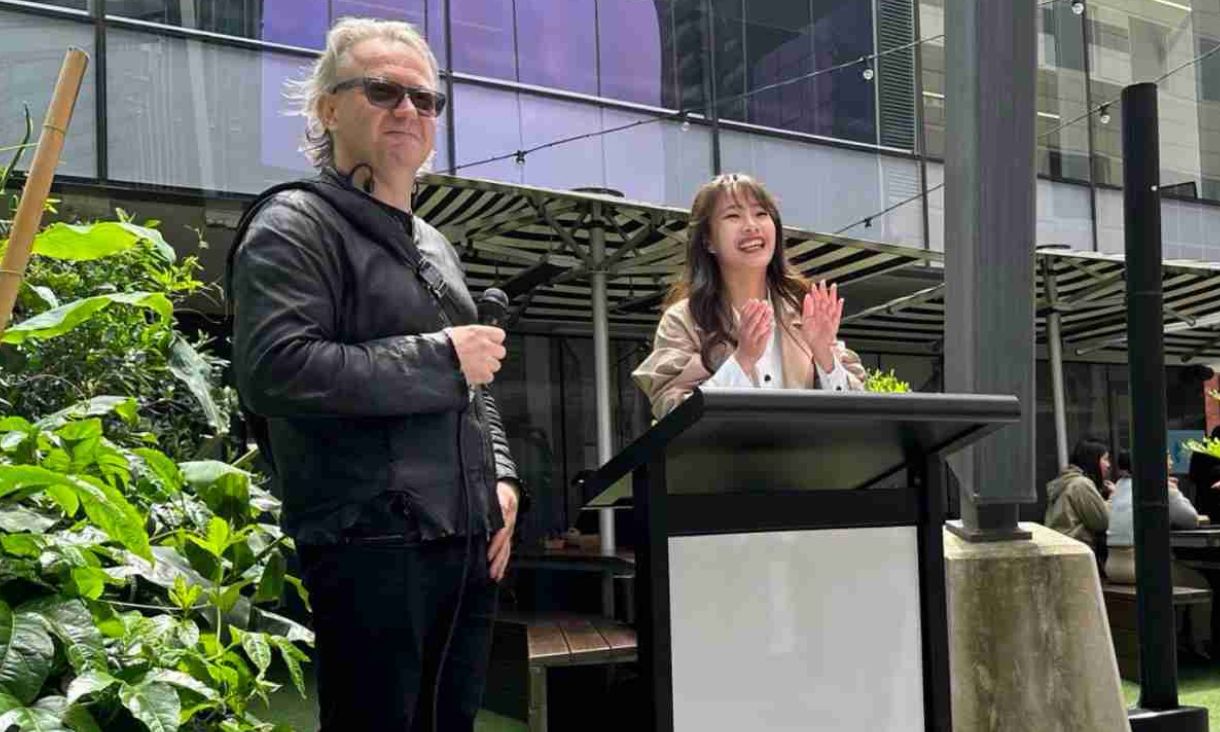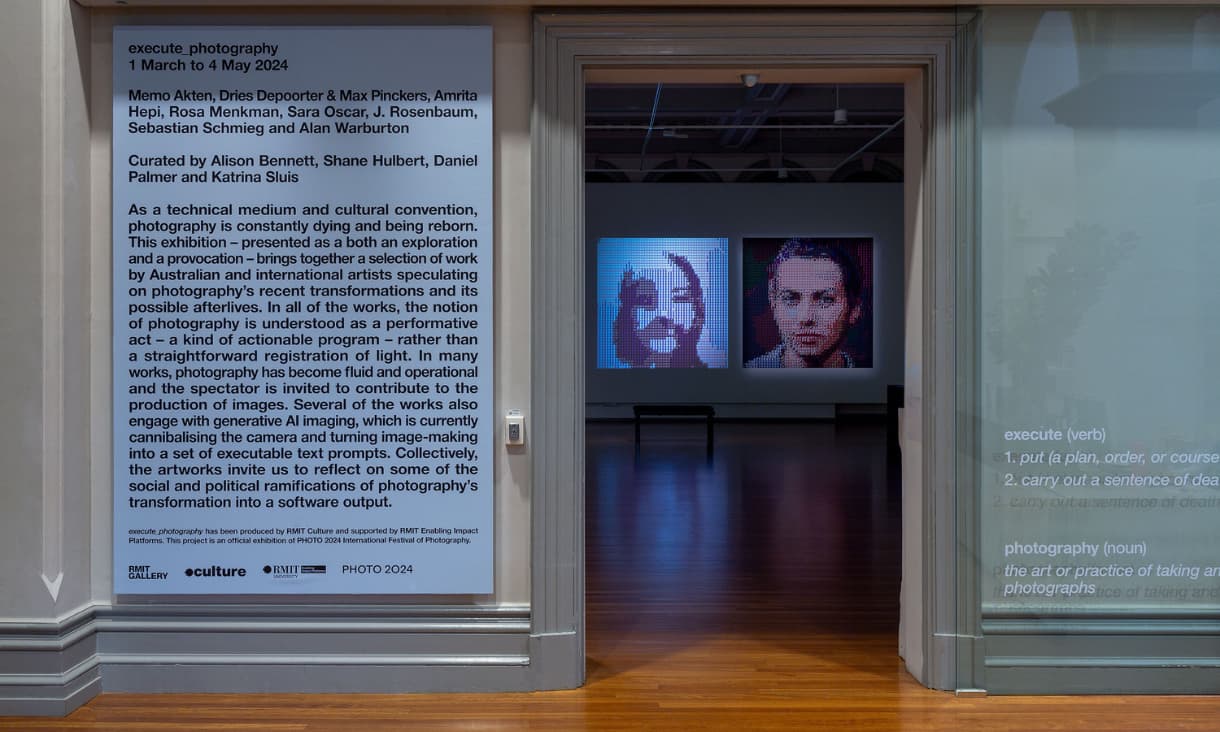Fang explained that the process of the work coming together was simultaneously a creative and technical one.
“The project took a year to design and finalise,” she said.
“Both the builder and the ISPT project manager have been in constant consultation and re-planning with me about the overall design and construction, in order to present the design to the public in a better way.”
“During the design process, I also kept changing my design. At the beginning, there were three different phases and drafts of the design for this gathering space, and then I improved it repeatedly to get the final result.”
“I was very impressed when I saw the design being constructed in front of me,” Fang said.
Fang’s work was officially opened by van Schaik at an event in Madame Brussels Lane.
The Arch of Spring was the first in a series of collaborations between RMIT and ISPT. The Design Research Team was led by van Schaik and included Dr Fiona Hilary from the School of Art, as well as Dr Oliver Vodeb from the School of Design.
Fang said she had learned some valuable new skills throughout the process.
“This whole process was a starting point that inspired me and provided me with a constant stream of experiences and inspiration,” she said.
Specifically, she remarked on her growth in understanding how to work with clients to deliver an outcome.
“Through this process, I became more adept at observing and understanding the internal needs of clients and transforming them into implementable solutions.”
“I can bring to the table a broad knowledge of responsive design and creative design concepts in the future. It has had a great impact on me in different aspects, both mentally, technically and in terms of experience.”
Fang said she was looking forward to designing more works like this in her career.
“I am seeking entry level roles in my field in either a private or publicly funded organisation that will give me exposure to new projects and the opportunity to work with and grow from experts in my field,” she said.
“I don't know my ultimate goal, but I look forward to each time I get to progress and carry out the process. I hope to bring more and better designs to the city, to life, and to the future.”
While Fang’s was the winning design, several other students took part in the project and put forward designs for the Madame Bussels Lane location, including Nathan Savankham, Blake Hillebrand, Emma Clyde, Georgia McCole, Girivarshan Balasubramanian, Feng Huang, Irene Li, and Jessie He.
Story by: Finn Devlin





